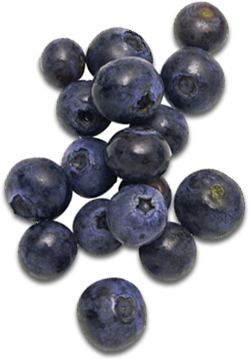no items to display
Fruits and Vegetables Meet and Greet
Think you know what’s a berry, what’s a vegetable, and what’s a fruit? Okay then, here’s a quiz. What are raspberries? How about bell peppers? And bananas?
If you said raspberries are a berry, bell peppers are a vegetable, and bananas are a fruit, you’re not alone. In the common usage of those terms, you’re right on all counts. But botanically speaking, raspberries are fruits (not berries), bell peppers are fruits (not vegetables), and bananas are berries (and fruits). Confused? So was I!
The term vegetable can be applied to any plant food whose root, stem, or leaves are eaten; for example, beets, celery, and spinach. If the edible part of the plant contains one seed (such as peaches) or many seeds (such as tomatoes), it’s a fruit. Berries are a type of fruit, specifically ones that produce a fleshy fruit with no stone and grow from one flower with a single ovary. Raspberries and strawberries aren’t actually berries in the technical sense of the term, although blueberries are.
There are a lot of common myths about fruits and vegetables beyond terminology. Here are a few:
Oranges are the best source of vitamin C. Citrus fruits are a good way to get vitamin C. A cup of orange sections has 160 percent of the Daily Value (DV). But you can get more than that from a one-cup serving of bell peppers (200 percent DV) and close to that much from one cup of strawberries (149 percent) or papaya (144 percent).
Bananas are high in calories. A medium banana has only 105 calories, which does not put it in the high-calorie category. In addition, it also has 3.1 grams of fiber, is an excellent source of vitamin B6, and is a good source of vitamin C, potassium, and manganese. Bananas are high in natural sugar compared to other fruits, though, so stick to eating no more than one small banana per day.
Carrots are high on the glycemic index. The glycemic index (GI) measures how rapidly the carbohydrates in a food are released into the bloodstream. Theoretically, a food that is high on the glycemic index will raise blood sugar more quickly than one that’s low. However, glycemic load (GL) gives a more accurate measure of how a food will affect blood sugar, because it considers how many carbohydrates are present in one serving of given food. Carrots have a high GI, but a low GL. A one-cup serving has 3.6 grams of fiber and a whopping 428 percent of the DV for vitamin A (as beta carotene). Carrots are also an excellent source of vitamin K and a good source of potassium.
White vegetables aren’t nutritious. You’ve probably heard that you should “eat the rainbow,” and while that’s good advice, some white vegetables aren’t too shabby either. Cauliflower, garlic, onions, and mushrooms all have impressive nutrional profiles.
Avocadoes are fattening. It’s true that avocadoes contain a lot of fat, but as I hope you know by now, not all fats are the same! Avocadoes contain healthy mono-unsaturated fat — the same heart-healthy kind found in olive oil. And they’re surprisingly high in fiber, with one cup providing 10 grams!
Do you know of any other common fruit and vegetable myths? Share in the comments below!
References
https://www.myfooddiary.com/blog/4-fruit-and-vegetable-myths-busted
http://nutritiondata.self.com/
http://www.huffingtonpost.com/riva-greenberg/gl-and-gi_b_863126.html






